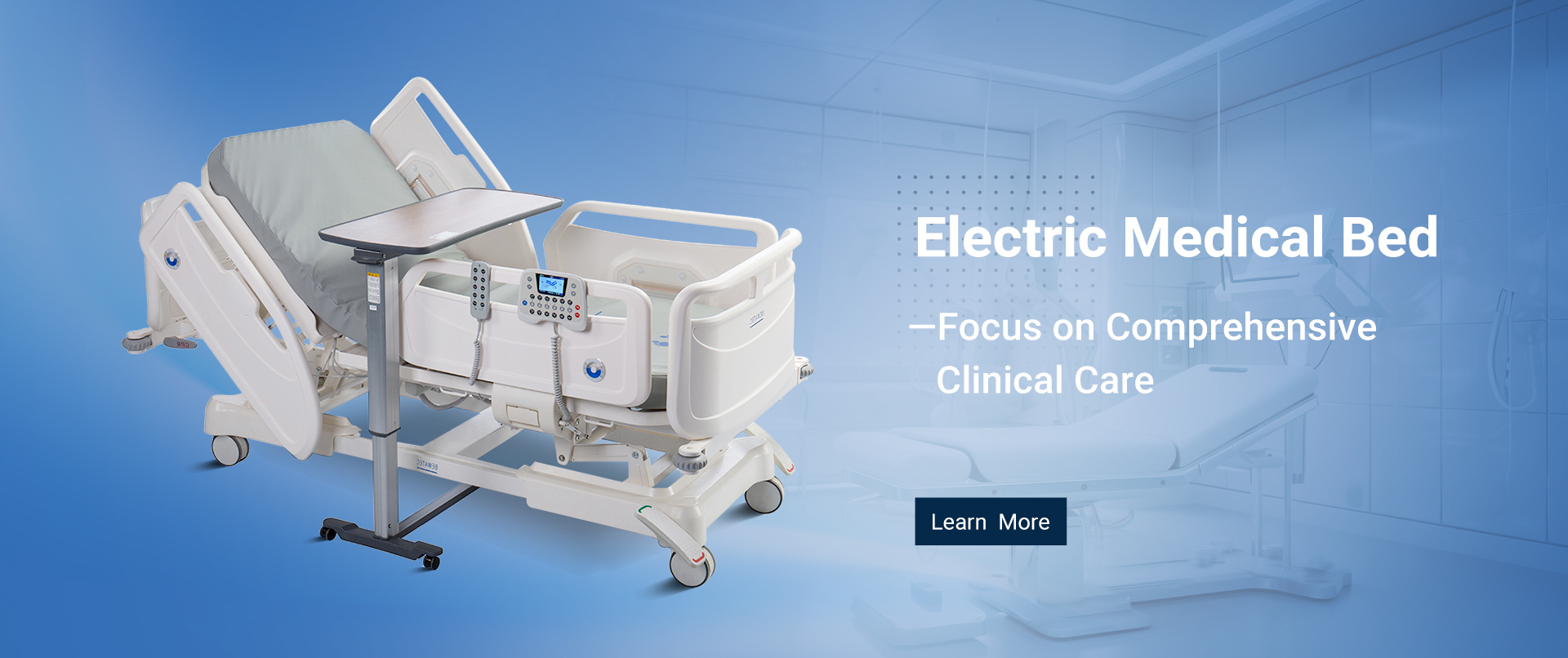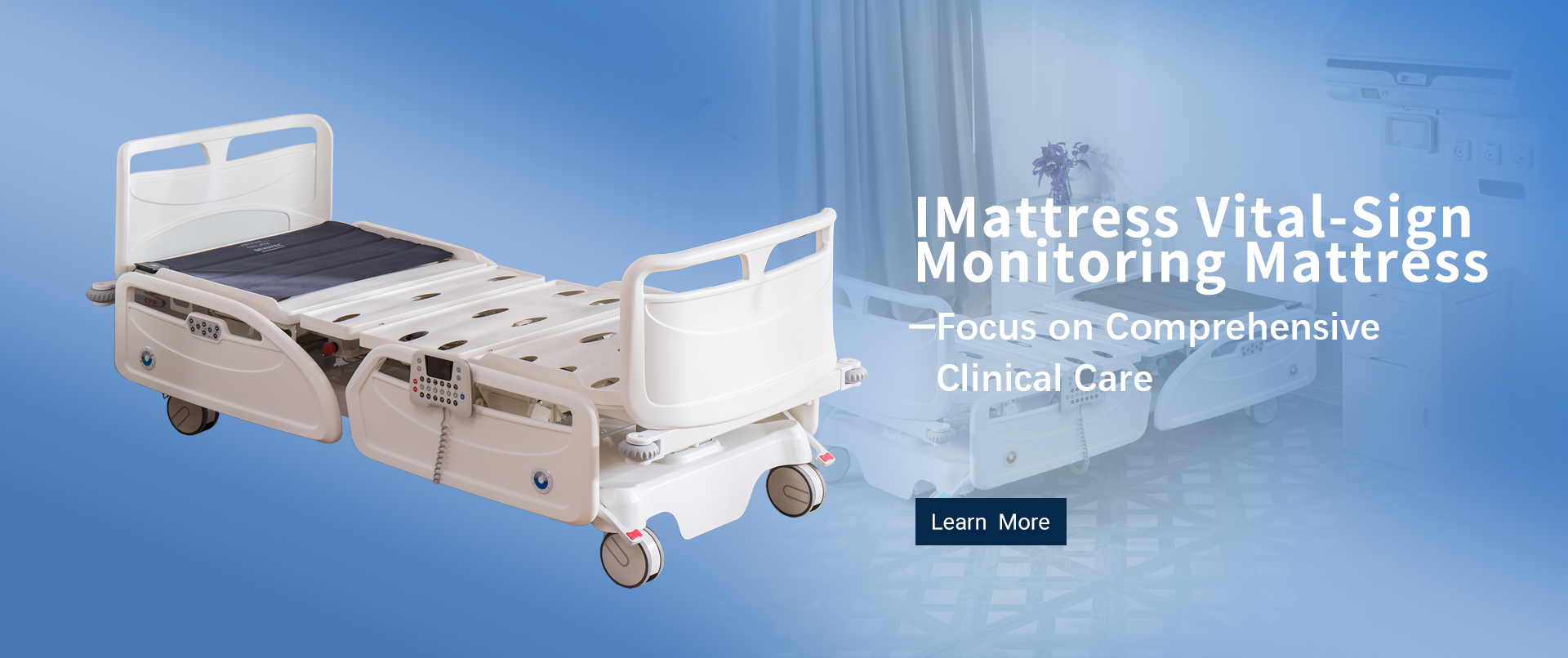
How to Analyze the Demand for Hospital Beds from China Manufacturers in 2023
Table of Contents
- Understanding the Current Landscape of Hospital Bed Demand in China
- Identifying Key Factors Influencing Hospital Bed Procurement in 2023
- Assessing Market Trends and Innovations in Hospital Bed Manufacturing
- Evaluating Competitor Strategies and Market Positioning
- Utilizing Data Analytics for Demand Forecasting in Healthcare Facilities
- Engaging Stakeholders for Insight on Hospital Bed Needs and Preferences
- Innovative and Chic Bedside Tables for a Comfortable Hospital Experience
- FAQS
- Conclusion
- Related Posts
In the ever-changing world of healthcare, it’s really important for both suppliers and providers to understand the demand for hospital beds from Chinese manufacturers. As we move through 2023, keeping an eye on this demand helps us get a better sense of market trends and what patients actually need. With the push towards smarter, more digital medical care, Bewatec (Zhejiang) Medical Device Co., Ltd. is right there at the forefront, working hard to improve the whole digital care experience for patients. They’re focusing on making beds that prioritize comfort, safety, and personalized care. Not only are they shaking up how hospital beds are designed, but they’re also setting new standards that healthcare providers around the world can aspire to.

This little intro is just the start—it's going to highlight some of the key factors behind why there's such a growing demand for hospital beds from Chinese manufacturers, all while showing how the industry’s moving toward a more digital future.
Understanding the Current Landscape of Hospital Bed Demand in China
Back in 2023, the scene around hospital bed demand in China is quite interesting, with things shifting due to an aging population, more investment in healthcare, and the ongoing impact of COVID-19. Hospitals are really putting a bigger focus on patient-centered care now, which means there's a growing need for beds that aren’t just functional but also more comfortable and tailored to different patient needs. Manufacturers should realize that, yes, sturdy and reliable beds are still a must, but the trend is definitely moving towards innovative designs that boost patient safety and comfort.
If you're looking to get a good handle on what’s needed, doing some thorough market research is key—talk to hospitals across various regions to understand their specific requirements. Connecting with healthcare professionals can also give you a deeper insight into what features really matter, like adjustable settings and tech integrations that help monitor patients more easily.
And don’t forget to keep an eye on policy changes related to healthcare funding—these can give you a heads-up on what might be in demand down the line. It’s also smart to stay updated on local manufacturing rules and potential supply chain hiccups, so you’re prepared for anything that comes your way. Working together with healthcare facilities on design ideas can really help you create beds that match what the market wants and needs most.
Identifying Key Factors Influencing Hospital Bed Procurement in 2023
Back in 2023, Chinese manufacturers noticed that the demand for hospital beds was really shaped by a handful of big factors. To be honest, ongoing global health concerns have pushed healthcare infrastructure into the spotlight. Manufacturers are now trying to figure out how to handle the growing number of patients—thanks partly to an aging population and a rise in chronic illnesses. Knowing these demographic shifts helps hospitals plan out how many beds they'll need down the line.
A good tip? Keep tabs on market research and healthcare trends—it’s a great way to stay in the loop. Also, talking directly with healthcare providers through surveys or casual chats can give you some solid insights into what kind of beds they’re actually looking for.
Another thing to keep in mind is how government policies and regulations play into the mix. In China, lots of initiatives aim to make healthcare more accessible, which can really influence how much money is funneled into hospital infrastructure. So, manufacturers should pay close attention to local government projects and funding decisions—that’s often a sign that demand for beds might be about to pick up.
A little tip? Form partnerships with local health authorities—this way, you can stay ahead of upcoming projects or funding opportunities. And don’t forget to stay informed about any policy changes; it’ll help you better match your products to what the healthcare sector actually needs.
Assessing Market Trends and Innovations in Hospital Bed Manufacturing
The hospital bed manufacturing scene is really going through some exciting changes right now, thanks to new innovations and how market demands are shifting. If you look at the latest industry reports, you'll see that the global smart bed market is set to grow pretty rapidly. It’s expected to jump from about $753.9 million in 2025 to nearly $499 million by 2033 — that’s roughly a 5.3% compound annual growth rate. This kind of growth points to a bigger push toward adding high-tech features into hospital beds, making patients more comfortable and helping healthcare providers run things more smoothly.
At the same time, the market for hospital bed mattresses is also on the rise. By 2033, it’s projected to hit around $637.91 million, starting from about $4.063 billion in 2025 with a growth rate of about 5.8%. That’s pretty impressive and really highlights how much effort is being put into R&D to develop new, innovative products that meet all sorts of healthcare needs. As manufacturers jump on these trends, combining smart tech with traditional manufacturing methods will be key if they want to keep growing steadily over the next decade. It’s an interesting time for this industry, for sure!
How to Analyze the Demand for Hospital Beds from China Manufacturers in 2023
| Region | Estimated Demand (Units) | Growth Rate (%) | Key Innovations | Market Trends |
|---|---|---|---|---|
| East China | 12,500 | 8% | Smart beds with IoT integration | Increased demand for smart health devices |
| North China | 10,200 | 5% | Automated adjustment features | Growing emphasis on patient comfort |
| South China | 15,000 | 10% | Lightweight materials and designs | Focus on modular hospital setups |
| West China | 8,400 | 6% | Eco-friendly materials | Shift towards sustainability in manufacturing |
| Central China | 9,600 | 7% | Enhanced hygiene features | Increased health awareness among consumers |
Evaluating Competitor Strategies and Market Positioning
When you're looking at how Chinese hospital bed manufacturers are faring in 2023, especially in a super competitive healthcare scene, it’s really important to keep an eye on the bigger picture. The market’s changing fast — the healthcare industry is constantly evolving, and with more players jumping in, companies need to get creative not just with their products but also with how they approach the market.
Right now, the pharma sector is going through some big shifts, thanks to rapid advances and a ton of investment in R&D to help manage different kinds of business risks. That’s why hospital bed makers can’t afford to be lazy — they’ve gotta stay on top of what their competitors are up to and tweak their strategies so they don’t fall behind.
Getting a good sense of what your competitors are doing means digging into the market. Manufacturers should really analyze their rivals — look at their pricing, the features they offer, and how they handle customer service. Knowing where others stand helps you figure out the best way to position yourself and stand out. Plus, with trends like globalization gaining momentum, there are both big opportunities and tricky challenges. Companies need to think about how to adapt their international strategies accordingly. In the end, if Chinese manufacturers focus on innovative products and staying flexible with market changes, they can really boost their standing in the global hospital bed scene.

Utilizing Data Analytics for Demand Forecasting in Healthcare Facilities
So, looking into 2023, it's pretty clear that China's gonna need a lot more hospital beds than before. The main reasons? Well, there's a bigger elderly population now, and chronic illnesses seem to be on the rise. Using data analytics to predict how many beds we'll need isn't just a fancy idea – it’s actually essential. Healthcare places really need to get a handle on these trends so they can adapt accordingly. According to research from the China National Health Commission, by 2025, China will need about 1.5 million additional hospital beds just to keep up with demand. And, honestly, many areas already face shortages during busy times.
Tools that analyze data can be game-changers for hospital administrators. They can look at past data and real-time info to figure out how to better manage the beds they have. By keeping an eye on patient admission numbers, demographic changes, and the spread of chronic diseases, hospitals can make smarter predictions about how full they'll get. For example, a report from the Ministry of Health suggests that if hospitals used predictive analytics more widely, they could boost bed utilization by up to 30%. That kind of efficiency isn't just nice to have — it means better care for patients and smoother operations all around. As more healthcare facilities start embracing these data-driven methods, they’ll be way better prepared to handle the coming challenges in bed demand and make the most of their resources.
Engaging Stakeholders for Insight on Hospital Bed Needs and Preferences
Getting a good grasp of what stakeholders want and need is pretty key when it comes to analyzing how Chinese manufacturers will demand hospital beds in 2023. Recently, there was a chat that really pointed out how important it is to include a mix of folks—like healthcare workers, hospital admins, and patients—to really figure out what’s needed in terms of bed design, features, and safety. For example, insights from a recent multi-disciplinary event in the UK showed that patient safety and comfort are at the top of the list—especially for vulnerable groups like those who are homeless or battling chronic illnesses.
The impact of considering all these perspectives could actually be pretty big. Market reports suggest that globally, the hospital bed market is expected to grow at about 4.67% CAGR from 2023 to 2030. That shows there’s definitely a rising need for hospitals to update their gear and facilities to keep up with the changing healthcare landscape. Bringing stakeholders into the conversation when designing or choosing beds doesn’t just make sure the beds are a good fit—it also helps build a stronger, more adaptable healthcare system. After all, when beds are better suited to different patient needs, hospitals can handle challenges more effectively, you know?

Innovative and Chic Bedside Tables for a Comfortable Hospital Experience
In recent years, the importance of aesthetics and functionality in hospital settings has come to the forefront, particularly regarding patient comfort. Innovative and chic bedside tables have emerged as essential components to enhance the hospital experience, allowing for a blend of style and practicality. According to a report by the Healthcare Design Magazine, hospital environments enriched by thoughtful design can reduce patient anxiety and promote healing, which emphasizes the value of integrating visually pleasing furniture into patient rooms.
These modern bedside tables are not just aesthetically pleasing; they are designed to be lightweight yet sturdy, accommodating the various needs of patients without compromising on structural integrity. A study published in the Journal of Nursing Administration found that well-designed furniture can improve accessibility and ease-of-use for patients and staff alike, proving that even small furniture items like bedside tables significantly impact hospital efficiency. Their ability to support essential items—medications, personal belongings, and electronic devices—while maintaining a fashionable appearance makes them a vital addition to healthcare facilities.
Moreover, the trend towards more inviting hospital interiors correlates with improved patient satisfaction scores. Research from the AHA (American Hospital Association) indicates that facilities that invest in quality design elements often report a 20% increase in overall patient satisfaction. By prioritizing innovative designs that provide comfort while focusing on user-friendly features, contemporary bedside tables are transforming hospital rooms into more pleasant environments, thereby enhancing the overall patient experience.
FAQS
: The demand for hospital beds in China is driven by population aging, increased healthcare investments, and the lingering effects of the COVID-19 pandemic. Additionally, there is a shift towards patient-centered care, leading to a demand for specialized and comfortable beds.
Manufacturers should consider innovative designs that enhance patient comfort and safety, while also ensuring that beds are sturdy and functional. Features such as adjustable settings and integrated technology for monitoring patient health are highly valued.
Manufacturers can assess the specific requirements by conducting market research and engaging with healthcare professionals through surveys to gain insights into the features that are most important to hospitals.
Government policies and regulations significantly influence procurement decisions, particularly regarding healthcare funding. Initiatives aimed at improving access to healthcare may impact the resources allocated for hospital beds.
It is essential for manufacturers to stay updated on healthcare trends and patient demographics to understand rising patient volumes, particularly due to an aging population and the prevalence of chronic diseases, which will help in better planning for bed capacity needs.
Manufacturers can align their offerings by building partnerships with local health authorities to understand upcoming projects and funding opportunities and by staying informed about policy changes that may affect the healthcare sector.
Conclusion
Looking into 2023, when you really dig into what’s driving demand for hospital beds from Chinese manufacturers, you find a pretty lively scene with lots of moving parts. To get what’s happening right now, you’ve kinda gotta take a step back and look at the bigger picture — like, what trends are shaping the market? One thing that’s a game-changer is how much innovation is happening in hospital bed tech. For example, a trend that’s really catching on is the push towards smart medical care and digital upgrades in healthcare. Companies like Bewatec (Zhejiang) Medical Device Co., Ltd. are leading the way with solutions that really focus on patient comfort and safety — pretty cool stuff, honestly.
On top of that, keeping an eye on what competitors are doing and how they’re positioning themselves helps spot gaps and new opportunities in the market. Plus, using data analytics for predicting demand is a smart move—it helps hospitals and clinics plan better. And don't forget, talking to stakeholders and understanding what they want in hospital beds gives valuable insights, making sure everyone’s needs are met. As this industry keeps evolving, the role of hospital bed manufacturers in China just gets more important — they’re really stepping up to serve the ever-changing needs of modern healthcare settings.
Related Posts
-

Finding Top Quality Medical Bed Suppliers A Comprehensive Checklist for Success
-

Leading the Charge: China’s Premier Digital Health Monitoring Innovations for Global Markets
-

How to Choose the Right Medical Bed Manufacturer for Your Needs
-

Future Innovations in IoT Sleep Health Solutions for 2025 and Beyond
-

China's Smart Manufacturing Leading Global Sales in Top Hospital Technologies
-

How to Choose the Right Hospital Mattress for Optimal Patient Comfort and Recovery
Blog Tags:









